KE Jetronic EHA Adjustment
I discovered at the MBCNSW Dyno day that my 560SEC was running dangerously lean. Lean enough to cause damage to the engine. While I was in the USA for work, I went to the Mid Florida Auto show. I met Pierre Hedary there (who runs an independent Mercedes workshop), who suggested that I should start by testing my fuel pressures and that he had a couple of videos on youtube to help. The first video was on checking KE Jetronic Fuel Pressures. The second video was on KE Jetronic EHA adjustment.
As I own two KE Jetronic cars and one K Jetronic, It made sense to purchase some fuel pressure gauges. They were about $100 USD. The test gauges plug in to the fuel distributor in two places. The first plug (without the valve) goes into the test port on the side of the fuel distributor. The second plug goes into the outlet for the cold start valve. The gauge set comes with the right fittings to rig it up.
Immediately I was able to rule out the fuel pumps and fuel pressure regulator as my starting fuel pressure was good. The test calls for two readings. the first one is from the test port and the valve closed. The second is with the valve open to the cold start fitting. The ideal readings are 6.0 bar with the valve closed and 6.4 bar with the valve open. What is more important than the actual values is the 0.4 bar difference.
As can be seen from the picture above, I had an 0.3 bar difference. This meant the car was too lean – which is what I had observed on the dyno. Most KE Jetronic cars have an oxygen sensor that controls the operation of the electro-hydraulic actuator (EHA). The 560 ECE does not have an oxygen sensor. In this case, the EHA can be adjusted manually. It is the small back control unit on the right hand side of engine.
Once removed, the slotted screw is removed to allow for adjustment. A small allen key is then used to adjust the EHA. In my case, I adjusted it in about one third of a turn. The EHA is then replaced, carefully to avoid disturbing the o-rings.
With the EHA adjusted and re-fitted, I re-ran the test. This time, I saw 5.9 bar on the test port with a bit over 6.3 valve open. Success! I now have the pressures in specification. I’m happy to leave that bit extra over 6.3 – I would rather be ever so slightly rich than too lean.
These test were all done at idle. Next thing was to check the pressures at some higher RPM levels. I asked a neighbor to hold the car at 1,000, then 2,000 RPM. The fuel pressures stayed steady at these increased revs.
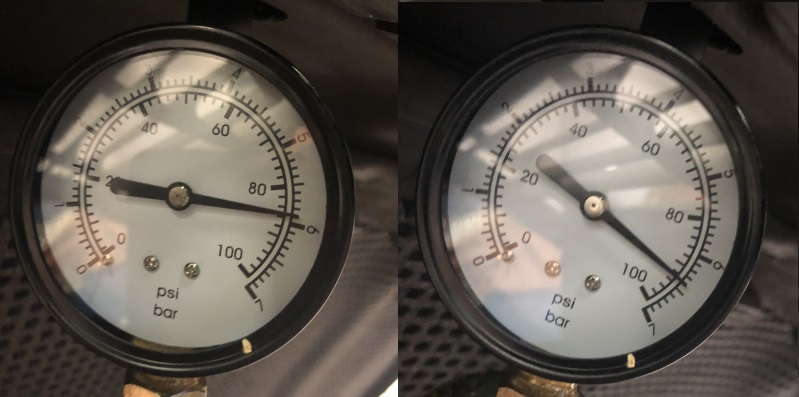 I also ran another test from a member of BenzWorld. Holding the revs at 2,000, I pressed on the air flow meter plate. This tricks the car into adding more fuel. If the engine is lean, the revs will increase, but if it is not, the car will bog down from getting too much fuel. In my case, the car bogged down. This was another sign the pressures were at the right level.
I also ran another test from a member of BenzWorld. Holding the revs at 2,000, I pressed on the air flow meter plate. This tricks the car into adding more fuel. If the engine is lean, the revs will increase, but if it is not, the car will bog down from getting too much fuel. In my case, the car bogged down. This was another sign the pressures were at the right level.
The final test was to check the readings of the potentiometer for the air flow meter. This is on the other side to the EHA. Correct spec is 0.7 volts at idle between pins 2-3. My car was at 0.9, so very close even if not perfect. The voltage also increased as I pushed down on the air flow meter pressure plate.
After these tests, all evidence points to having fixed the lean running condition of my car. I don’t have a dyno to test it on, but the car is now adjusted back to the correct specification. I found the KE Jetronic EHA adjustment to be fairly straightfoward, with the pressure gauges.
Update, 26/11/19: While the car was in for an A/C regas, I asked to have it quickly tested on the exhaust gas machine. Air/Fuel was 14.8, so this adjustment was perfect.


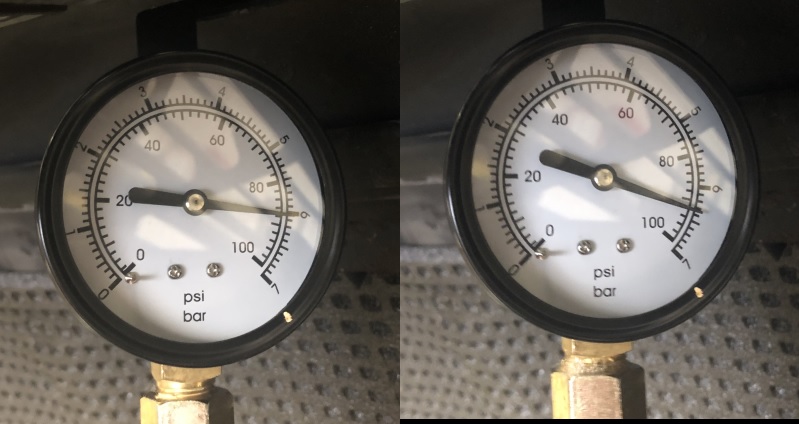
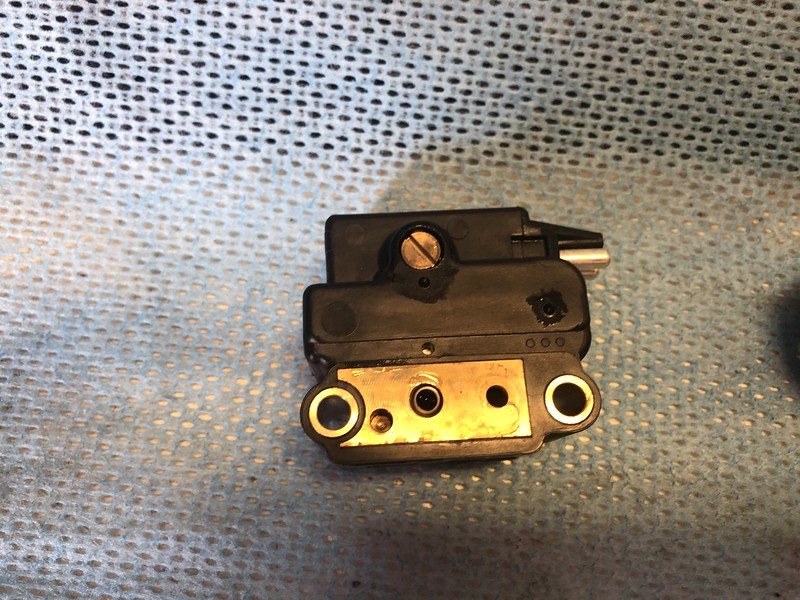

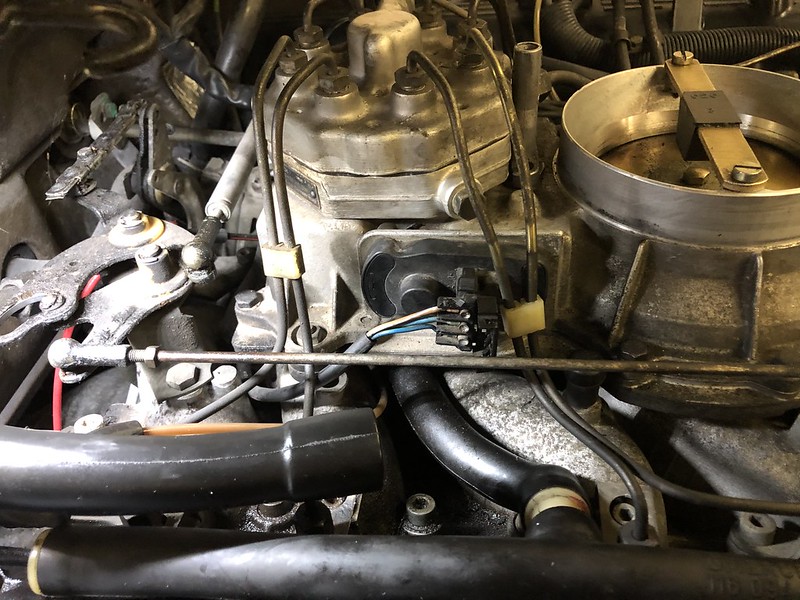


































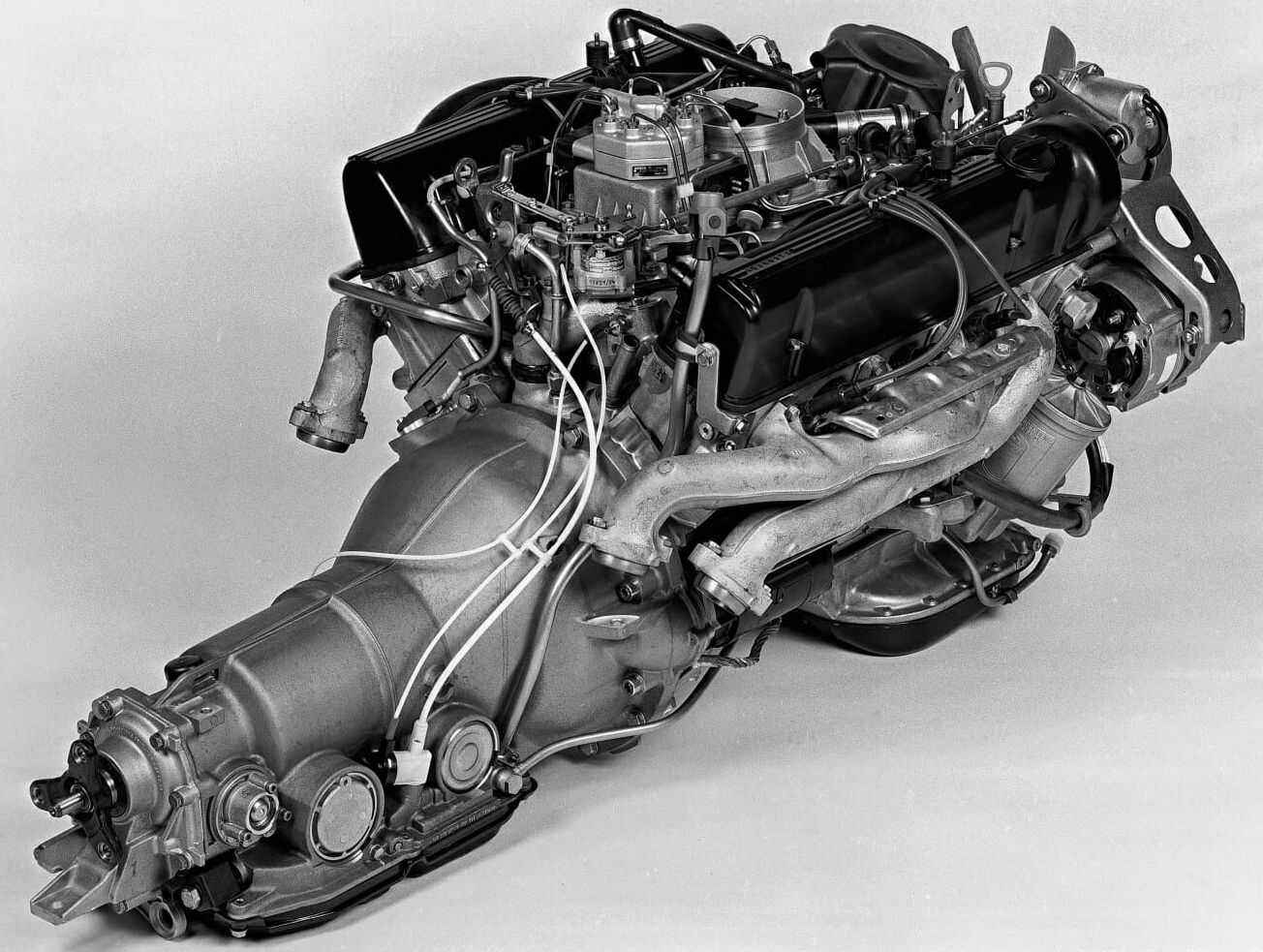
























I notice here you have adjusted EHA according to Fuel distributor pressures – upper and lower chamber difference. There is also an operating test via a test link. Using the test link ignition on and engine off I get no current in the line. Why is this so – considering the EHA is a working one? Am I supposed to have an operating current in line all the time?